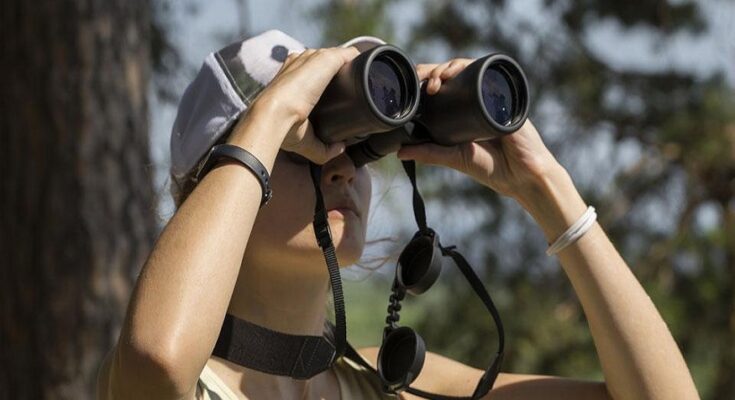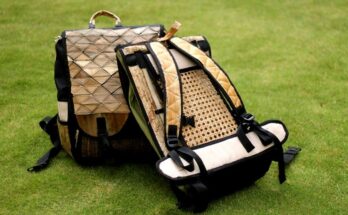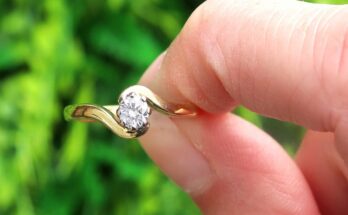Optical quality is the key to a clear picture of your object. A binocular’s visual quality determines the level of detail you can see and the amount of light it will transmit. This metric is an excellent place to start when selecting binoculars. The more light you can see, the brighter and more precise your image will be. Light-transmission measurement tells you how much light passes through the binoculars’ lens and enters your eye. A binocular with an appropriate coating will help reduce reflected light, improving the image’s brightness. A compact binocular is smaller in diameter and exit pupil measurement than its counterparts, making it better for brighter daylight conditions. This is important when birdwatching during dawn and dusk.
Magnification
The magnification of a good pair of binoculars is the ratio between the image size and the object’s actual size, representing the distance between the object and you. For example, an 8x binocular gives you a clear picture of a thing eight times as far away as you are. On the other hand, a 4x binocular shows the same image as if it were 100 meters away. The higher the magnification, the more likely the image will be unstable, narrow, and less vibrant. Suppose you use bushnell binoculars Canada to capture pictures of exceptionally far away objects. In that case, it is a good idea to buy ones with VR technology, which reduces image shake.
Although binoculars are mainly used for viewing far-away objects, some people use them to observe insects or birds. The minimum focus distance should be less than six feet in these cases. The magnification, the higher the minimum focus distance. Check your manufacturer’s specifications to find out if a binocular has a wide field of view.
Field of view
One crucial factor to consider when buying a pair of binoculars is the field of view. A good pair of binoculars should have an angle of view (AoV) of at least 52.5 feet at 1000 yards. This measurement is called the angular field of view (AFOV). However, many people are confused between the two. First, to find out the difference between the two, we need to know what they mean. Angular field of view is the one that’s more than 52.5 degrees.
The field of view is the size of the area that you can see at a given distance. For example, a pair of binoculars with a FOO of 15 degrees would give you a 360-degree field of view. A good FOO would help you see objects at a far distance without moving your binoculars. A good FOO is an essential feature for any pair of binoculars.
Optical quality
A good pair of binoculars can distinguish between a spectacular view and a dull one. The optical quality of a good pair of binoculars depends on several factors. Fully coated binoculars feature an anti-reflective layer of magnesium fluoride, which is considered an excellent choice for bird watching. Other options include multi-coated lenses, which contain several layers of chemical compounds, and waterproof models.
When shopping for binoculars, look for one with multi-coated optics and BAK-4 prisms. The objective lens should be large enough to allow for clear sight. Some models also have adjustable straps to increase comfort and balance. Other features that may be important to you include a comfortable, padded, and adjustable strap, an eye-cup cleaning kit, and a lens hood for better protection from dust.
Weight
When deciding on a new pair of binoculars, weight is one of the most critical factors. Most binoculars weigh around one pound, which means that a heavy pair of binoculars will be challenging to carry. But, with proper research, you can decide which binoculars are suitable for you based on their weight. For example, lightweight, compact binoculars are ideal for backpacking, while midsized binoculars offer a brighter image and are easier to handle. On the other hand, full-size binoculars are too heavy for many users and may be too bulky for long periods.
Magnification is another essential factor to consider. Higher magnifications offer higher magnification, but at the expense of more weight. The ideal magnification range is between eight and ten times. If you need a binocular for long distances, look for an optically correct binocular with a larger exit pupil than its objective diameter. In addition to the magnification range, consider the lens coating and the weight. A binocular with a large exit pupil and rubber coating is better for long-term use.
Warranty
Many companies offer a warranty on their excellent binoculars. The contract may cover the optical components and the outer protective armor. However, it does not cover intentional damage, theft, or loss. This warranty is transferable and applies to new instruments purchased through authorized dealers in North America. Warranty periods vary from manufacturer to manufacturer.
Make sure to check the manufacturer’s warranty policy. This will protect you in case of a defect. Also, make sure that you purchase a pair with an anti-reflection coating. You also want to look for a warranty covering the lens and the barrel. A manufacturer’s warranty should cover good binoculars if you plan to use them for astronomical purposes. If you buy a pair from a reputable company, they will stand behind their product, which will help you get the best possible outcome.




